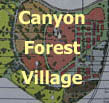|
|
Letter
to Coconino County Board of Supervisors From
Dennis Foster (and John Eastwood) |
|
|
|
||
|
At the hearing before the Board of Supervisors on Monday, February 7, 2000, Mr. Grady Gammage, representing Canyon Forest Village, made a number of comments and statements about the economic analyses conducted during this project, some of which we have done. His exhortation that the record should be clear on these issues has led us to offer, by way of this letter, our responses. Although some of these issues are rather weighty, we have tried to express ourselves with an eye toward brevity. We address these issues in the order that he raised them before the Board. Issue #1. Is this an “NAU” study? In and of itself there is probably no such thing as an “NAU” study. NAU's people do the work. Further, Mr. Gammage is incorrect to characterize the work we have done as if it were purely individual. We have conducted three independent studies of the economic analyses contained in the EIS. Our contracts for this work were with the Bureau of Business and Economic Research (BBER), a research unit of the College of Business Administration (CBA) at Northern Arizona University (NAU). The argument is, ultimately, pointless. All of the studies done should rise or fall on the merits of their content, not the qualifications, or lack thereof, of their authors. Issue #2. Our April, 1999 study took projected CFV revenues and subtracted that from “the pie”, suggesting that there will be zero growth in visitation. There are two issues here. Yes, CFV will take a "slice of the pie." However, the conclusion that this means zero visitation growth is an error. The level of visitation growth is a separate issue, and actually irrelevant to the underlying issue of “economic impacts.” The economic impact that CFV has on northern Arizona is simply the following: Impact = (What we have without CFV) – (What we have with CFV)
However, the issue of growth is important. Higher growth mitigates the impact on existing property owners. These issues should be separated in any legitimate analysis. We offer this analogy to better convey the distinction between the “impact” and how “growth” mitigates it: Consider a hypothetical county public servant. Call him Bill. He makes $60,000 a year. Bill gets a $500 pay raise every year (because he does good work). Over ten years, Bill will have made, including the pay raises, $627,500. Then the Board decides that they would like to fund a special project. To pay for this project, Bill will have to take a cut in his base salary of $2,000. Given growth (his annual raise), he will make less than $60,000 for four years, and then "recover," earning more than that each year. Over ten years, Bill will make $607,500. What is the economic impact on Bill of this special project? It is a loss of $20,000 ($2000 per year for ten years). Yet, according to the EIS (which Bill might have helped on), Bill is not impacted at all. He started out making $60,000 a year. And, over the ten years he made an average of $60,750 per year. They would conclude that if Bill complains it is just a case of sour grapes, because he is better off even with this special project.
Suppose that, instead, Bill gets
a $1,000 a year increase? The impact is exactly the same—he is out $20,000.
Without the cut, he would have made $655,000 over ten years.
With the cut, he makes $635,000.
The EIS would have contended that there was even less impact on
Bill in this case. That is patently false. Issue #3. Why did the Sept. 1998 study have $13.4 million in average annual reduced spending (in northern Arizona) while the April, 1999 study had $29 million. This is actually a good question. There should be some explanation for such seemingly divergent results. There is. The earlier study was primarily conducted by BBC Research, from Denver, Colorado. We assisted their efforts to understand the EIS model and improve upon it. Consequently, they (BBC) went to great lengths to construct a model very similar to the one in the EIS, so that the results of the two were comparable. In April, 1999, when we were asked to prepare a report specifically for Alternative H, we rebuilt the model, eliminating much of the convoluted approach used earlier. We believe that this later model is much more comprehensible to the average reader than the ones used in the EIS. The results of our April, 1999 model and the BBC model are identical with regard to the aggregate shift in rooms sold (from others to CFV). However, the rooms from Tusayan and from inside the park (at the off-rim lodges of Yavapai and Maswik) that shifted in the BBC model were not included in the dollar impact to northern Arizona. In hindsight, this was an error. The April, 1999 study has corrected this. We may also note that the EIS team had a year to prepare their Supplemental Draft EIS. Our first look at their work was with the public release of this document -- we almost immediately noted that they had made a serious calculation error, where the actual “cumulative” impacts were some 550% higher than the values shown. Following our discovery of their error, the Forest Service acknowledged the mistake, corrected it, and extended the sixty days comment period by an additional thirty days. At the end of that period, the report issued by BBC and BBER identified a host of deficiencies with the EIS results, ranging from inaccurate assumptions to material omissions in their analysis. Issue #4. The Pollack study showed the gains to Coconino County. The Pollack study considers only the revenue, jobs and spending that fall out of the CFV project itself. This is typical of any hotel feasibility study. The notion that this project displaces business done by existing hotels, restaurants, gift shops, etc. is ignored in this study. If CFV does not attract more visitors or cause them to spend more, then Pollack's study simply confirms our results. It simply measures the spending displaced to CFV from other communities. Nobody, in any study done to date, has assessed the aggregate effect of the Canyon Forest Village project on Coconino County. Nor has anyone tried to assess the supposed benefits from CFV as a model of sustainability. The issues of what this value may be, whether it is worthwhile and who should pay would seem to be important. Issue #5. The EIS is the “best and fairest” guide with regard to assessing economic impacts. Absolutely untrue.
The EIS has not modeled “economic impacts” which, supposedly,
was their purpose. The
expertise of the EIS consultants seem poorly suited to this task. The
EIS Draft (June, 1997) and Supplemental Draft (June 1998) were rife with
errors and based on unsupported assumptions. Issue #6. CFV cannot be both a huge success, driving others out of business, and a failure. The EIS assumes that CFV will be successful. Our studies have been based upon this assumption. We have, however, suggested that this assumption may be incorrect. The risk, which has not been assessed in any study, is that, once built, CFV will not be able to compete on the basis of price. If Tusayan, Williams and Flagstaff hotels can significantly underprice CFV, bankruptcy of the latter does not seem out of the question. The Forest Service has ignored the risk that CFV might fail, stating that "the risk falls on CFV." While CFV's investors would be the first to suffer, CFV's failure would impact other businesses. Once the hotels and shopping mall are built, they would likely reopen under new ownership (after a CFV bankruptcy) simply because there are few other uses for such structures. The new owners would have lower costs and might then prove to be tougher competitors. CFV does have the locational advantage, as visitors must stop here to board the train to get into the park. If the park service can prohibit Tusayan hotels from having kiosks, information booths and pick-up stations at the transit lot, then that may help CFV insulate themselves from this competition. How easily might CFV fail? We have not studied this issue in depth, but it seems prudent that someone should. [Conclusion] The EIS process has been going on for three years. The exclusion of parties with an economic or even academic interest from participation in the analysis has resulted in a cavalier disregard for their concerns. The assumptions of the EIS are suspect and the conclusions are flawed. In hindsight, perhaps it would have been useful for the Board to hold a mini-summit on these economic consequences before having to make a decision in an environment of so much confusion over these issues. We thank you for your attention in this matter and for your patience. |
||
|
|
||
|
|
||

